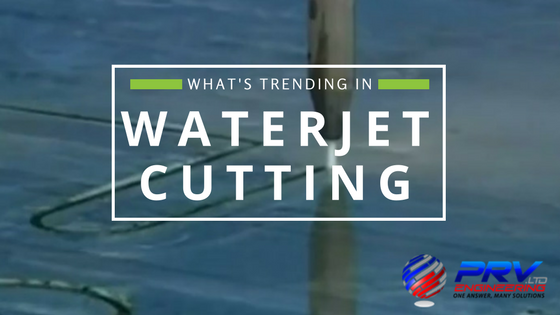
Over the past few decades, abrasive waterjet cutting have evolved significantly. From a relatively crude cutting tool in the early 1980’s to a more sophisticated machine tool used in various sectors ranging from aerospace, mining to the food industry. This evolution is mainly due to better material development, more efficient system design, improved control of the waterjet tool and the progression to achieve higher pressure.
Abrasive waterjet cutting technology is one of the most versatile as it’s nearly unlimited in terms of material type, thickness, part size and shapes it can cut. Fabricators must continuously adapt and overcome challenges related to the ever-changing requirements. In an attempt reduce costs and increase productivity, they must try and get the most out of every piece of equipment they have.
Waterjet cutting technology is evolving
The industry is moving towards a more preventive maintenance model. This is a vital shift as for many years the industry worked on a ‘break-fix model’. This means the machine is used until it breaks and then it’s a rush to get it fixed. Major focus has also been put on making maintenance more accurate and predictable thus reducing downtime in general.
Expanding software capabilities are improving the usability experience with a user-friendly CAD/CAM interface that is compatible with nearly all file formats. Modern software design is also playing a major role in simplifying the integration of waterjet technology into standard production.
Engineering shops are also implementing waterjet technology as a cost-effective, complementary machining method to cut parts to near-precise requirements. This greatly aids in minimizing waste, maximizing raw material usage and accelerates overall production.
Here are a few ways evolving technology is helping fabricators be more versatile:
- Improved software cutting models allow for increased accuracy and precision of cuts
- Wrist articulation at ±10 degrees (5-axis kinematics with articulated A/B wrist)
- High-precision clamping that allows faster attachment and removal of the cutting heads
- Touchdown height sensor that establishes proper standoff height
- Improved user interface in pumps help operators monitor performance
- Abrasive recycling systems allow fabricators to capture, recycle, and re-purpose used abrasive
Advantages of waterjet cutting
Our Idroline S1730 hydro-abrasive waterjet cutting system is an elite design which ensures superior technological and productive performance. The system is capable of cutting a wide variety of materials using a very high pressure jet of water or a mixture of water and abrasive.
Waterjet cutting is often used during fabrication of machine parts and is the preferred method when the materials are sensitive to the high temperatures generated by other methods.
Here are just a few advantages of waterjet cutting:
- Cold cutting – no heat affected zones (HAZ)
- No hardening
- Omni-directional cutting (ability to cut in any direction)
- Small cutting width (kerf)
- Excellent material utilisation
- Stress-free cutting
- Perforates most materials without starting holes
Removing rubies and sapphires from the mix
At some point in time, rubies and sapphires may have been seen as precious materials but not in the manufacturing world. In fact, they are a basic consumable in waterjet cutting and not as strong as you might think. With an average cost of $15 to $25 and only lasting 20-40 hours, they are not the solution.
Rubies and sapphires are often used in waterjet orifice designs but are vulnerable and susceptible to impact from debris within the system. Because they erode relatively quickly, fabricators are left with sub-par jet streams. As a result, there is a lower quality edge cutting, slower cutting speed and overall reduced tolerances.
This is where diamond orifices come into the equation. It might cost $425 or more but they last a minimum of 500 hours. This is vital as it minimizes the downtime associated with replacing waterjet orifices. They are also significantly harder, more robust and ensure tolerances are consistent throughout the product’s life cycle.
In the coming years, abrasive waterjet cutting will move even further into digital connectivity and the Industrial Internet of Things (IIOT). With Internet-connected machines, future abrasive waterjet systems will have more forward-thinking features and functionality.
PRV Engineering manufactures for an expanse of industries including Aerospace and Defense , Oil and Gas, Automotive, Rail, Construction among others. Get in touch if you need help with hydro-abrasive waterjet projects or if you have any questions about our precision engineering one-stop facility.
This site uses Akismet to reduce spam. Learn how your comment data is processed.


 Mail:
Mail: 




Leave a Comments